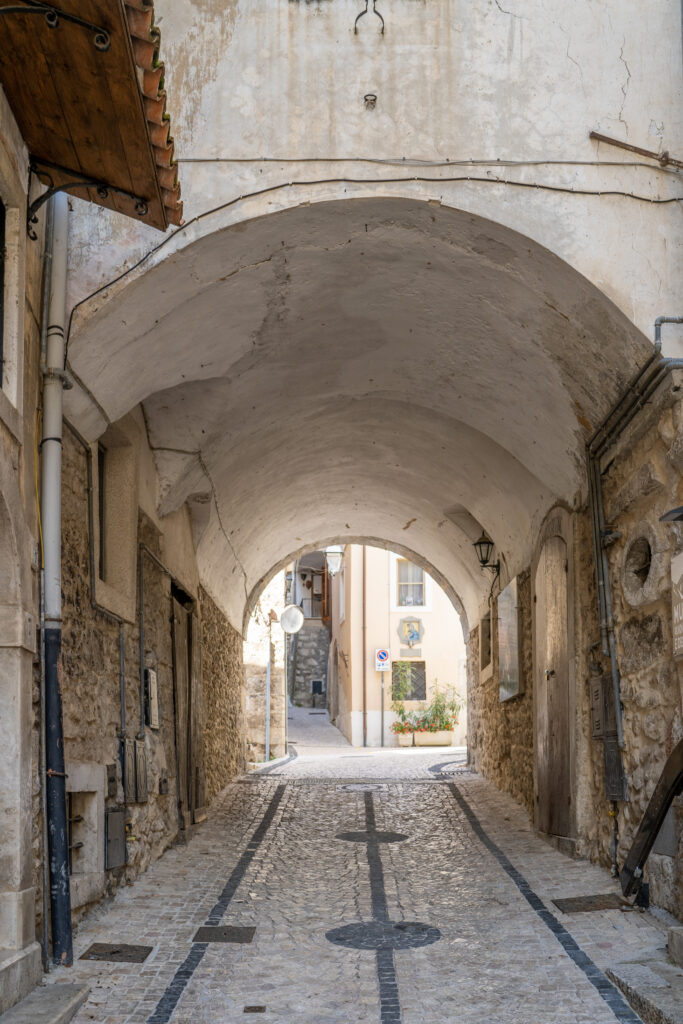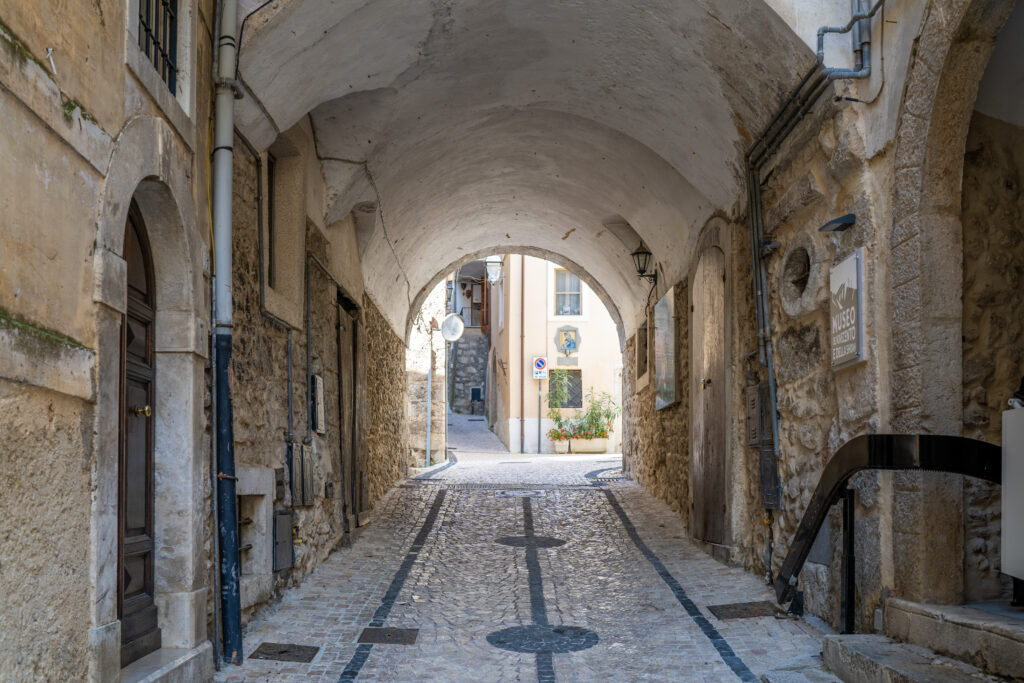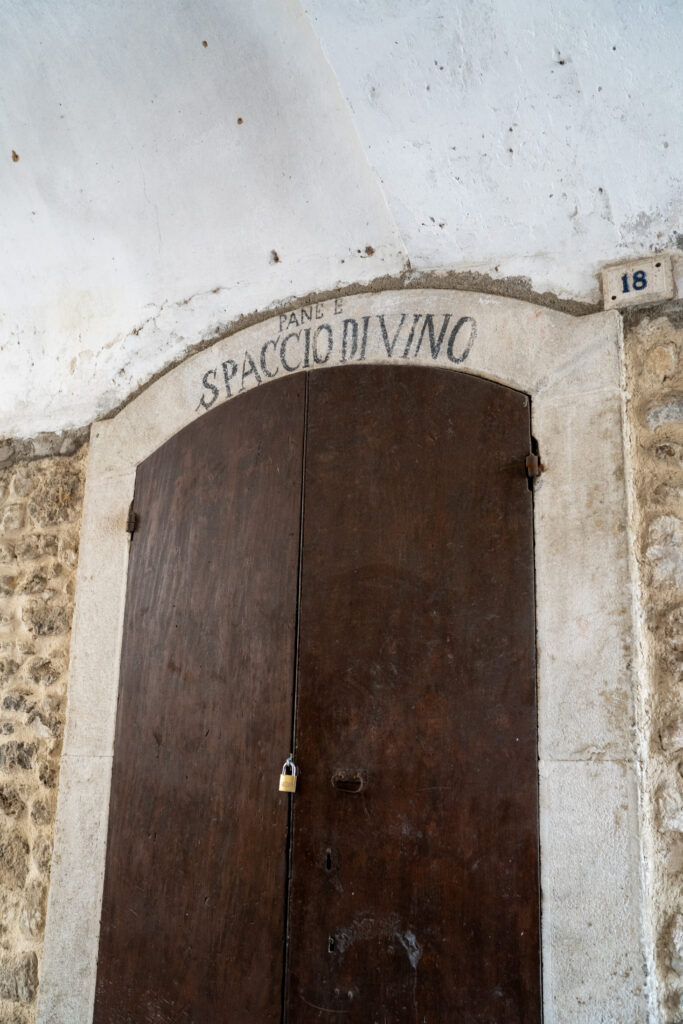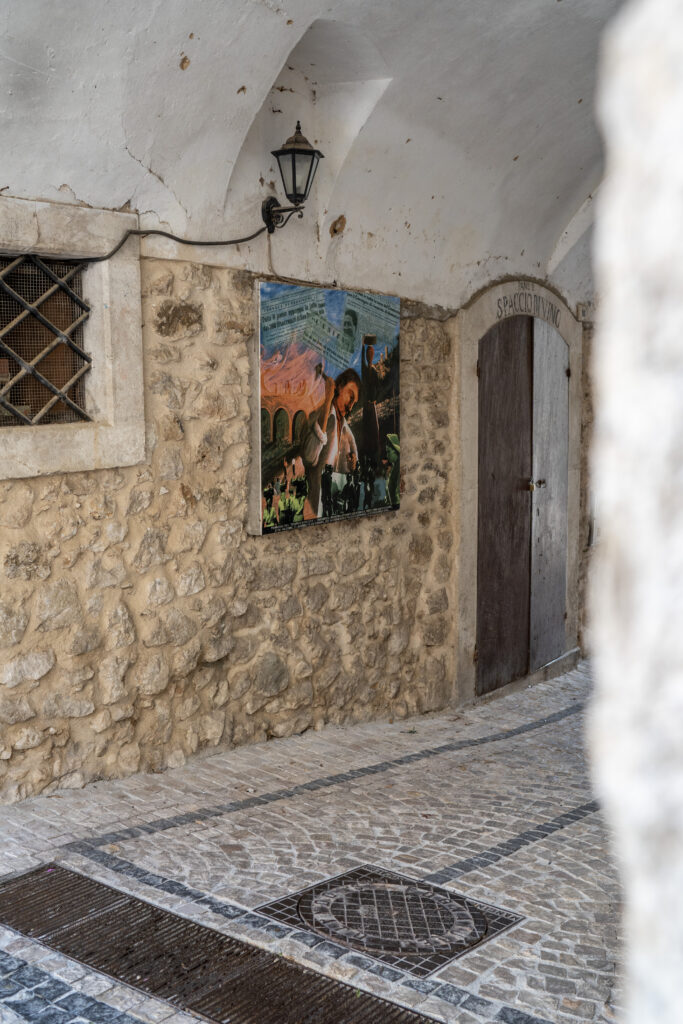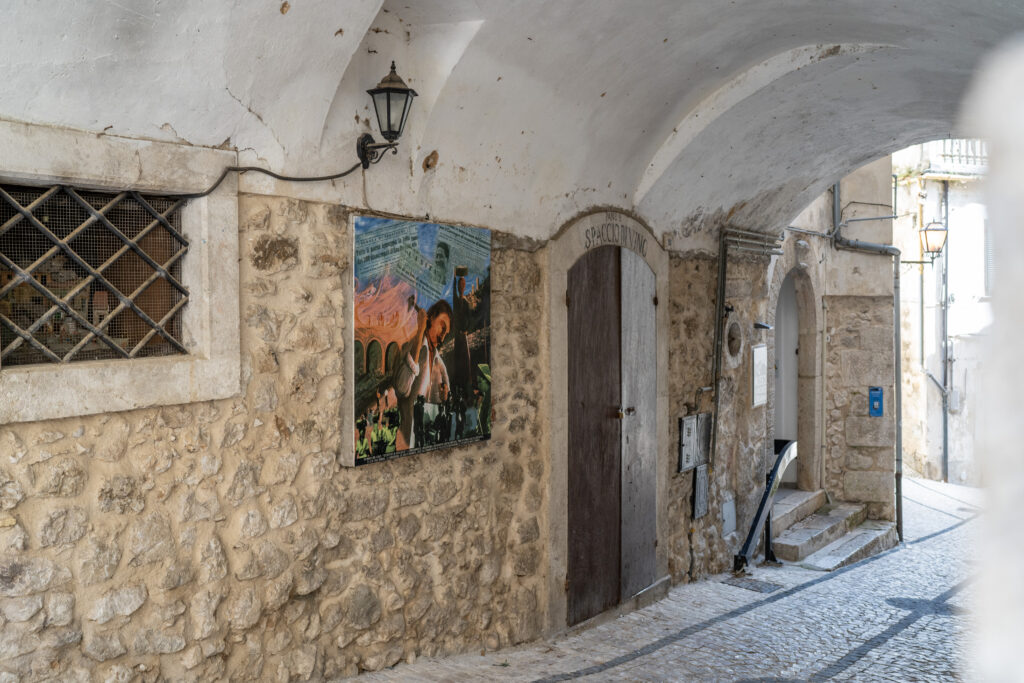Spuort of the Old City Hall
Historical landmark
In the heart of San Donato Val di Comino, under the characteristic "spuort'" of the Old Town Hall on Via Orologio, is a work of art that tells a fundamental piece of local history. This passageway, known as an underpass, houses a commemorative panel created by artist Luciano Tocci on the occasion of the 50th anniversary of the Strike to the Reverse (1951-2001).
The Reverse Strike, a unique and innovative form of protest, took place in the spring of 1951. It was organized by workers who had long been unemployed. During this strike, hundreds of people voluntarily engaged in the construction and maintenance of rural roads in the area, working without compensation to improve the infrastructure of their own land.
The protest lasted two months and involved about 350 unemployed people, including 70 women. The initiative was an attempt to draw attention to the local community's economic difficulties and to gain government support for public works. Unfortunately, the strike was suppressed by law enforcement, with carabinieri and police occupying the town to prevent further work.
An article in the newspaper L'Unità, dated May 1, 1951, reported that out of 4700 inhabitants of San Donato Val di Comino, 350 were unemployed, mostly artisans and skilled laborers. The struggle began with the construction of a road connecting San Donato to Settefrati. In record time, the workers managed to build a mile and a half of road, complete with stone ballast, gutters and reinforced edges. During the protest, a delegation of trade unionists, workers and municipal representatives went to the Prefecture to ask for funds to continue the work, but the Prefect refused the request.
The road built during the strike was symbolically named "Peace Road" by the workers themselves, a name engraved on the roadbed as a sign of hope and solidarity.
Visiting the Spuort' of the Old Town Hall is not only an opportunity to admire a work of art, but also to immerse oneself in a significant chapter in the history of San Donato Val di Comino. This commemoration not only honors the sacrifices and courage of the 1951 workers, but also serves as a reminder and inspiration for future generations. Come and discover this corner of history, where art and memory are intertwined in a timeless tribute.
The Reverse Strike, a unique and innovative form of protest, took place in the spring of 1951. It was organized by workers who had long been unemployed. During this strike, hundreds of people voluntarily engaged in the construction and maintenance of rural roads in the area, working without compensation to improve the infrastructure of their own land.
The protest lasted two months and involved about 350 unemployed people, including 70 women. The initiative was an attempt to draw attention to the local community's economic difficulties and to gain government support for public works. Unfortunately, the strike was suppressed by law enforcement, with carabinieri and police occupying the town to prevent further work.
An article in the newspaper L'Unità, dated May 1, 1951, reported that out of 4700 inhabitants of San Donato Val di Comino, 350 were unemployed, mostly artisans and skilled laborers. The struggle began with the construction of a road connecting San Donato to Settefrati. In record time, the workers managed to build a mile and a half of road, complete with stone ballast, gutters and reinforced edges. During the protest, a delegation of trade unionists, workers and municipal representatives went to the Prefecture to ask for funds to continue the work, but the Prefect refused the request.
The road built during the strike was symbolically named "Peace Road" by the workers themselves, a name engraved on the roadbed as a sign of hope and solidarity.
Visiting the Spuort' of the Old Town Hall is not only an opportunity to admire a work of art, but also to immerse oneself in a significant chapter in the history of San Donato Val di Comino. This commemoration not only honors the sacrifices and courage of the 1951 workers, but also serves as a reminder and inspiration for future generations. Come and discover this corner of history, where art and memory are intertwined in a timeless tribute.
Do you want to visit this attraction?
Book your vacation now.
Spuort of the Old City Hall,
Clock Street,
16,
03046 San Donato Val di Comino FR,
Italy
-
Via Orologio, 16, 03046 San Donato Val di Comino FR, Italy
Details
Suitable for
- Accessible to wheelchair users, Childrens, Couples, Families, Groups, Solo travelers
Best season to go
- All the seasons
Duration / time of visit
- Up to 1 hour
Type of tour
- Small groups tour, Solo tour, Private tour
Are audio guides provided?
- No audio guides are provided
Available languages
- English, Italian
Ticket price
- Does not require a ticket






